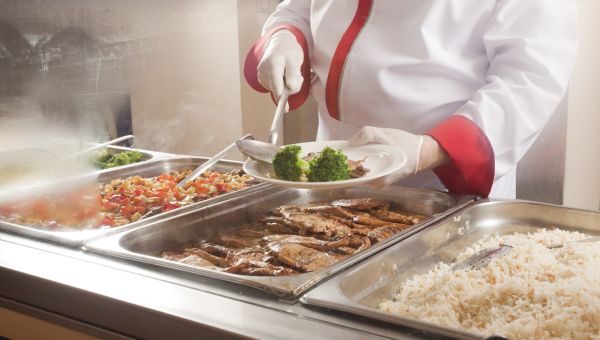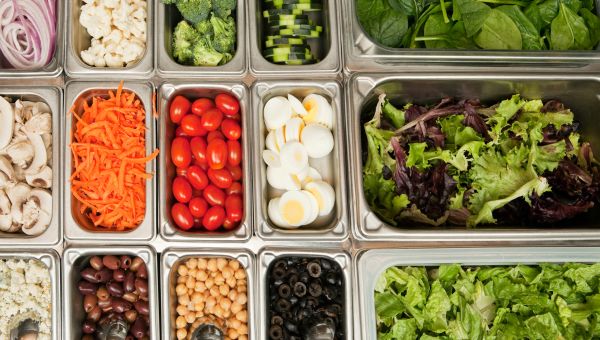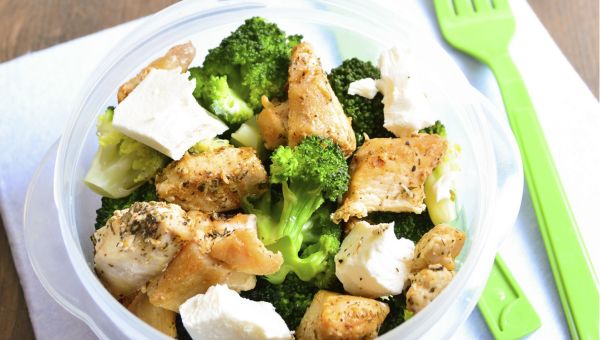A nurse’s guide to eating well at work
Eat better in a pinch. Here's how to fuel your body during a busy shift.
Updated on June 10, 2024

As a nurse, healthy eating on the job can be a major challenge. Limited time during a busy shift combined with few healthy options in the cafeteria can mean your body doesn’t get the fuel it needs to stay energized. Still, there are ways to eat healthfully no matter the situation. Use this guide to get the best nutrition possible in the time that you have.

Choose wisely at the cafeteria
Salad bars are typically the best option to create a quick meal that features fresh fruits, vegetables, and lean proteins. But what if your cafeteria doesn't have a salad bar? Here's how to navigate the cafeteria:
- Avoid anything that's covered with cheese, deep fried, or swimming in a thick sauce.
- Choose lean protein and cooked veggies that have been broiled, boiled, steamed, or baked.
- Think of quarters when you fill your plate. According to the U.S. Department of Agriculture, a healthy plate consists of one-half fruits and veggies, one-quarter lean protein, and one-quarter healthy carbohydrates, or carbs (such as whole grains).
Tip: Keep portion sizes in check by using a salad plate rather than a standard dinner plate.

Eat Right At The Salad Bar
If your cafeteria has a salad bar, start by filling your plate with lots of leafy greens and crunchy vegetables and a serving of lean protein. Choose oil-based dressings (rather than creamy varieties) and use them sparingly.
Picks: Romaine lettuce, spinach, broccoli, carrots, tomatoes, bell peppers, grilled chicken, chickpeas, walnuts, green olives, oil-based dressings
Skips: Salads made with mayo (such as coleslaw or tuna, chicken, or potato salad), croutons, creamy salad dressings
Tip: Avoid foods with high amounts of sodium. These include canned vegetables. Canned beets, green beans, and corn usually have more added sodium than fresh options.

Bring your lunch From Home
The healthiest option is often to bring your lunch or dinner from home and stash it in the fridge. Salads are one easy way to eat in a hurry and sneak more veggies into your diet. Try filling your container with spinach, pecans, and strawberries for a light, refreshing meal under 300 calories, or mix up a bowl of tomato asparagus salad. Top it with strips of leftover grilled chicken for a complete meal.
Make use of tasty leftovers with these simple recipes:
- Simple salmon: full of heart-healthy omega-3 fatty acids
- Zesty quinoa salad: high in protein and gluten-free
- Roasted chicken breasts with Brussels sprouts: filled with fiber and vitamin C

Get the most out of the vending machine
In a pinch, grabbing a small snack from the vending machine may be better than not eating at all. But finding healthy snacks can be a challenge, since most machines are stocked with candy and fried chips. Look for these options:
- Nuts or seeds
- Trail mix
- Whole-grain crackers
- Baked chips
- Raisins
Tip: Scan nutrition labels and look for snacks with 5 percent or less of the daily value for added sugars per serving.

Hydrate The Right Way
What you drink is just as important as the food you eat. Soda is often filled with sugar and empty calories and doesn't hydrate as efficiently as plain water. In fact, drinking one sugar-sweetened soda each day could add up to a 15-pound weight gain by the end of the year. Don’t be fooled by diet sodas. They may have zero calories but they may still fuel cravings for sweets.
If you're looking for a little variety in your beverage, try seltzer water or unsweetened green tea. Studies suggest that the L-theanine in iced green tea helps improve mental alertness—just what you need on a busy shift!
Tip: Is your energy lagging? Ditch energy drinks for water. Water is effective at quenching your thirst and if you’re dehydrated, it gives you a natural boost.

Snack Smartly
Preparing healthy snacks to bring to work is a good way to prevent cravings, which can lead to overeating. Good-for-you snacks also keep your blood sugar levels steady and metabolism running efficiently. A healthy snack is fewer than 200 calories, combines a protein with complex carbs, and limits trans fat, saturated fat, added sugar, syrups, and any grains that are not 100 percent whole-grain.
What to bring:
- Hummus and veggies
- Apple and peanut butter
- Almonds and a serving of fruit
- Apple slices and cheddar cheese
- Slices of turkey and whole wheat crackers
- A crunchy salad with seasonal produce and a handful of walnuts

Baba Y, Inagaki S, Nakagawa S, Kaneko T, Kobayashi M, Takihara T. Effects of l-Theanine on Cognitive Function in Middle-Aged and Older Subjects: A Randomized Placebo-Controlled Study. J Med Food. 2021;24(4):333-341.
More On


video

article

slideshow


video


video
